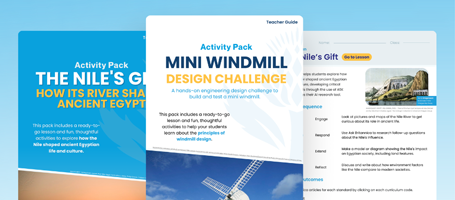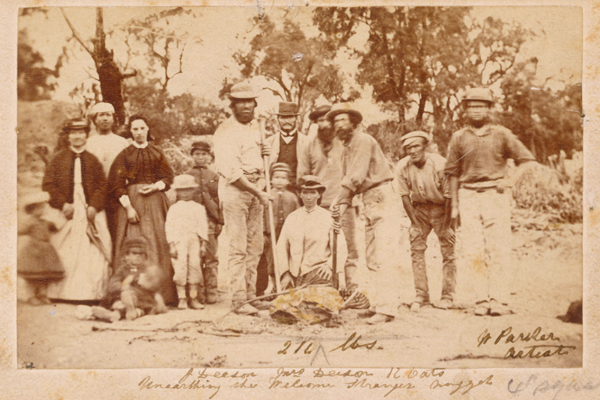Before the 1850s, Australia was a remote, little-known colony populated mainly by British convicts. But within months of the discovery of gold in 1851, Australia had an international reputation.
The changes brought about by the first gold rushes transformed Australia and set its course of development for decades to come. Just 50 years after the fateful find at Bathurst, the British colonies would unite to become the independent Commonwealth of Australia.
Britannica takes a deep dive into the profound social, cultural and political effects of the 19th century gold rushes, as well as the catalytic roles they played in the shaping of Australia as a nation.
The following lesson plan is designed for middle to high school students using resources from Britannica School. Contact your library staff to find out if your institution already has access to Britannica School or claim your own free trial.
Unit Title
Making a Nation…During and After the Gold Rush
Year
Middle and High Years 7-9
Key Learning Area
History
Curriculum Links
Australian Curriculum
| Code | Elaborations | |
|---|---|---|
| ACDSEH089 | Experiences of non-Europeans in Australia prior to the 1900s (such as the Japanese, Chinese, South Sea Islanders, Afghans) | Outlining the migration of Chinese to the goldfields in Australia in the nineteenth century and attitudes towards the Chinese as revealed in cartoons (for example, ‘The Mongolian Octopus’). |
NSW Curriculum
| Code | |
|---|---|
| HT5-4 | Explains and analyses the causes and effects of events and developments in the modern world and Australia. |
VIC Curriculum
History / Levels 9 and 10 / Historical Knowledge / The making of the modern world / Australia and Asia
| Code | Elaborations | |
|---|---|---|
| VCHHK137 | Different experiences and perspectives of non-Europeans and their perspectives on changes to society, significant events, ideas, beliefs and values. | – Describing the impact of this group on the Aboriginal and Torres Strait Islander peoples of the region. – Investigating the differing views of pastoralists and gold miners and how they influenced Victoria. – Examining the experiences of non-Europeans in Australia prior to the 1900s, such as the Japanese, Chinese, South Sea Islanders, Afghans. – Outlining the migration of Chinese to the goldfields in Australia in the nineteenth century and attitudes towards the Chinese as revealed in cartoons, for example, the Mongolian Octopus. |
Assessment:
- Various work samples based on tasks completed e.g. artwork or letter.
- Observation of students as they research and work through the task elements.
- Observation of speech presentation using Rubric.
Resources:
- Internet access
- Device
- Various art materials
Introduction:
The following activities are based on content found in Britannica School’s Middle level article on Australian Gold Rushes. They can be used together with the article as a supplementary learning resource.
Teaching Strategies / Learning Experiences:
Students to complete the following activities:
1. Watch the video Australia: Victoria Gold Rush, examine Samuel Thomas Gill’s painting depicting a family working on the goldfields and read the paragraph about Women on the goldfields.
2. Using the information you have researched imagine you are a woman experiencing life on the goldfields. Compose a letter to your family back home describing your experiences. Include details of the conditions in which you live and your feelings about living and working on the goldfields. Explain the responsibilities you have as a woman.
3. The gold rushes had an immense impact on Australia’s population. News of the 1851 discoveries attracted people from countries around the world. This was Australia’s first taste of a multicultural population.
4. Investigate the cultural differences and racism in the gold fields using the following Britannica content:
Use these images to inform your research:
- Australia: Lambing Flat Riots
- Australia: Immigration
- Chinese Miner
- Australian Gold Rushes: Chinese Market Gardens
- Australian Gold Rushes: Chinese Miner
5. The Harvest of Endurance Scroll is a 50 meter artwork depicting snapshots of Chinese emigration to and contact with Australia. The scroll portrays the hardships, survival and resourcefulness of the Chinese people. Prepare a 3-5 minute speech to share your findings. The Oral Presentation Rubric can be used to assess your presentation.
6. What was the Eureka Stockade? Build a profile of this significant event in Australia’s history. Include researched information, images and video where appropriate.
- When did the Eureka Stockade occur?
- Where did it occur?
- Who was involved in the Stockade?
- What events/decisions made the miners feel they were being unfairly treated?
- How did the police treat the miners?
- Explain the conditions of a mining licence.
- Why was it a key event in the development of democracy in Australia? Explain
7. How did the gold rush effect the Aboriginal People?
- Create a list of advantages and disadvantages for Indigenous people.
- Create an artwork depicting how an Aboriginal person would have witnessed the gold rush. Your piece should express the emotions and feelings they would have been experiencing at the time.
Sources:
ABC (2010) Behind the News – Classroom Episode 2 Teacher Resource [online pdf] Available at: http://www.abc.net.au/btn/resources/teacher/episode/20100223-goldrush.pdf [Accessed 05 March 2019]
Featured Image from BRITANNICA SCHOOL: John Deason and Richard Oates, the finders of the “Welcome Stranger” gold nugget, pose with a group at the site of their discovery in Victoria, Australia. State Library of Victoria, Australia (accession no. H13298).
More Educator Resources
Sign up with your email for more free resources from Britannica.
Get full access to Britannica School any time, on any device with a school-wide subscription. Request a quick tour or get started free.

